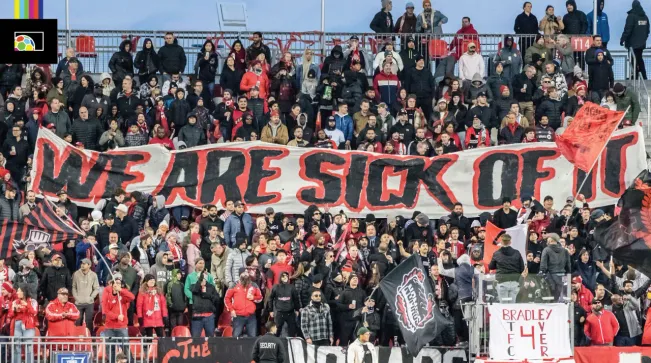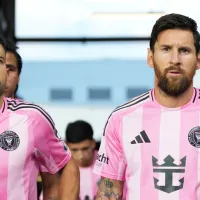Major League Soccer has been on a fairly consistent growth spurt since the mid-2000s. After retracting down to 10 teams in 2002, the period since has been largely successful and stable for the league. But fans of soccer around the world always have one question whenever the league expands: when will MLS introduce promotion and relegation?
The short answer: not anytime soon
MLS was not designed with, or intended to have, promotion and relegation. It’s a mechanism that is almost entirely foreign to American sports, never used in any meaningful capacity in any sport in the country.
Indeed, the business and organizational structure of MLS makes implementing relegation problematic, to say the least.
MLS is a single-entity league. That is, contracts with players are centrally held by the league. Team owners each own an equal stake in the league itself and the clubs are franchise extensions of it. And owners pay a very hefty price to be a member of this exclusive club. The current going rate for a new MLS team is around a half-billion dollars. Suddenly dropping out of the top division due to a bad season, and your club losing value, is not something many MLS owners, if any, would volunteer to do.
And when pressed on the issue, league officials have been consistently standoffish on the concept.
Plus there is the issue of what to do with Canadian MLS teams. At present, CONCACAF does not sanction Canadian teams playing in American second division leagues. If being sent down, where would, say, Toronto FC go? The Canadian Premier League is Canada’s official division one league, so that wouldn’t really make sense either.
You’ve got prior investments from owners to consider. There’s not wanting to lose key markets and teams. For example, Toronto FC, Canada’s biggest city, and Leo Messi’s Inter Miami both finished in the bottom three this past season. In turn, there is certainly hesitance to welcome in undesirable (in the eyes of the league, anyway) replacement teams/cities via promotion. The idea of pro/rel is pretty much totally at odds with how MLS operates.
But maybe, just maybe, we may see relegation, in some form, in the future.

TFC fans had a bad time in 2023. How would they feel if last place also meant dropping down a level?
Want to move up? Come on in (if you’ve got a big checkbook)!
In the 21st century, MLS has fallen in love with the idea of “promotion”.
From the start of the league in the early 1990s, the first 16 individual teams to play in the league were brand-new creations from scratch. However, since 2009, and the arrival of the Seattle Sounders, things have changed. Including Seattle, eight MLS sides have moved up from a lower professional division, keeping their name and colors when getting “promoted”. Arguably another team, St. Louis, did the same. Albeit this was with a different name and colors and only partially shared ownership with the previous lower division club.
Sending teams the other way, however, is almost a non-starter. Would a team like, for example, the Chicago Fire keep their stake in MLS business if moving down? Would they have to dissolve and re-form as a team in USL or another league? Without substantial reworking of the entire league system and heavy oversight from the USSF, it just wouldn’t work.
But there is another way we might see relegation in MLS…
Faux/Rel
There are two ways MLS may adopt some semblance of the global standard for club competitions. However, both still involve keeping things to themselves.
One way would be, within their existing division one framework, to split the 30 MLS teams into two “divisions”. MLS has never been shy to toy with their league format over the years. And something like this would create the illusion and flavor of promotion and relegation, without anyone actually getting kicked out of the club.
Here’s how it could work: Take the top 18 overall teams and, in the following season, place them into “MLS 1”. The bottom 12 teams would then go into “MLS 2” (that’d be one hell of a season, wouldn’t it?). From there, the two could swap two or three teams at the end of each season. Any future expansion would then first filter into the second division (but at the same high cost of entry, naturally). You could rinse and repeat this process if the number of teams grew too large again, to create a third tier. Basically, this approach would act as a more dramatic version of a playoff system. Instead of missing the chance to compete for the MLS Cup one season, you’d miss out until you were able to climb high enough in the standings to play in the top division again.
The other way involves something MLS has already done. In 2022, MLS built out its own internal pyramid with the launch of MLS NEXT Pro. Sanctioned as a division three, it mostly consists of reserve teams. However, independent clubs are joining up as well. These include existing teams from other leagues, like Chattanooga FC and Jacksonville Armada. It also will add new teams such as Carolina Core and a future Cleveland outfit.
A second tier could be built out using this league as an incubator. The strongest teams could form a D2 league that would then link to MLS. To make it fair to the billionaires who’ve already bought in, a team winning promotion could still have to pay the “expansion” fee.
Relegation within MLS: take it or leave it
Barring something astonishing happening, it’s highly unlikely MLS will directly participate in promotion and relegation with another, non-MLS, league.
The most likely possible way we see anything like it is as part of some sort of internalized mechanism such as those outlined above. And honestly, it’s not as outlandish as you might think.
Some purists would call it a bastardized version of the system, and frankly, not good enough or as beneficial to the game in the country as a true open system would be. You could count myself among that camp.
But MLS splitting and operating with a promotion and relegation scheme within its own house would accomplish a few things:
- Stimulate fiercer competition with more high-stakes games
- Build credibility with the international soccer community including players and coaches (and fans who either don’t know the difference, or don’t care, that teams outside the MLS ecosystem would be excluded)
- Offer something totally unique in the American professional sports landscape – providing that another league such as USL doesn’t do it first
- Do the above while not altering the business structure or investment value of MLS teams
In an internal relegation setup, owning an “MLS 2” team would be fairly similar to owning an NHL or MLB team that’s gone years without making the playoffs. You’re not in the running for a major title, but you’re still in the exclusive big boys club, controlling all the money and access to it.
In any scenario though, relegation is almost certainly a long way off in MLS, if it ever happens at all. Sadly, the closest thing to relegation that has ever existed in Major League Soccer is not playing well, losing a bunch of money, and ceasing to exist entirely.
Photos: Imago














